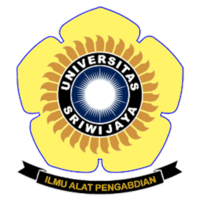USING FLIP CHART IN TEACHING SPEAKING TO THE TENTH GRADE STUDENTS OF MAN 1 LUBUKLINGGAU
Abstract
The problem of this study was “Is it effective to use Flip Chart in Teaching Speaking to the Tenth Grade Students of MAN 1 Lubuklinggau to the tenth grade of MAN 1 Lubuklinggau?”. The objective of the study was to find out wether or not it is significantly effective to improve students’ speaking skill in speaking the expression of asking and giving opinion to the tenth grade students of MAN 1 Lubuklinggau. The population of the study was all of tenth grade students of MAN 1 Lubuklinggau with the sample class X Mia 2 consist of 41 students. In this study, the writer used the quasi-experimental method. In collecting the data, the writer used the speaking test that was given twice to the students. In analyzing the data the writer used three techniques. They were the calculation of individual score,the students’ categories score based on the Minimum Mastery Criteria, and match t-test formula. The writer found that in the pre-test, the students’ average score was 66,44. On the other hand, in the post-test their average score increased to be 75,41. The result of the calculation showed the 6.84 was higher that its t-critical value. Furthermore, the Null Hypothesis ( ) was rejected and the alternative hypothesis ( ) was accepted. Finnaly, it can be concluded that it was significantly effective to improve students’ speaking skill by using Flip Charts to the tenth grade students of MAN 1 Lubuklinggau in the academic 2014/2015.
Keyword: Teaching, Speaking, Flip Charts
Full Text:
406-411References
Arikunto, S. 2010. Prosedur Penelitian Suatu Pendekatan Pratik. Jakarta: Rineka Cipta
______. 2011. Dasar-dasar Evaluasi Pendidikan. Jakarta: Rineka Cipta.
Benites, eun. 2013. The flip chart as the teaching resource. http://www.akimoo.com/2013/the-flip-chart-as-a-teaching-resource.accessed at 10.35 pm 2 september 2014.
Brown, and Yule. 1989. Principles of Language Learning and Teaching:2^nd. Englewood Cliff,Nj:Prentice Hall. Inc.
Brown, H. D. 2004. Language Assessment: Principles and Clasroom Practices. White Plain, NY: pearson Education, Inc.
Cameron, L. 2011. Teaching English for Young Learners. Cambrige:
University Press
Chaney, A. L., and T. L. Burk. 1998. Teaching Oral Communication. Bostom: Alliyn&bacon.
Finnochiaro, M., and B. Cristopher. 1982. The Funtional-National Approach: From Theory to Practice. Oxford: Oxford University Press.
Fraenkel, J.R., and N.E. 1993. How to Design and Evaluate Research in Eduation. New Yor, NY: McGRaw-Hill, Inc.
Gan, Z. 2012. “Understanding L2 Speaking Problem: Implications for ESL Curriculum Development in a Teacher Training Institution in HongKong”. Australian Journal of Teacher Education. Vol 37 Vol 37, 1, January 2012, Issue 1, Article 3,pp 45-59.
Harmer, J. 2008. The Practice of English Language Teaching. Harlow, Essex: Pearson Education Ltd.
Hatch, E. And H. Farhady. 1982. Research Design and Statistic For Applied Linguistics. London: Newbury House Publisher. INC.
Issach, S, and W.B. Michael. 1985. Handbook in Research and Evaluating. Sandiego, California: Edit Publisher
Tarigan, H.Guntur. 2008. Berbicara : Sebagai suatu keterampilan berbahasa. Bandung. Angkasa
Mc Millan, H.H. 1992. Educational Research: Fundamentals for the costumer. Michigan: Harper Collins
Newton, A.C. 1992. “Jokes and Riddles”. English Teaching Forum. Vol. XXV, No. 1, pp.29-34.
Nurseto, T. 2011. “Membuat Media Pembelajaran yang Menarik”. Jurnal Ekonomi dan Pendidikan. Vol 8 No 1 April
Pratiwi. D. E and Mulyani. 2013. “Penerapan Media Papan Balik (FlipChart) Pada Pembelajaran Tematik Untuk Meningkatkan Hasil Belajar Siswa Sekolah Dasar”. JPGSD. Vol 1,No 02 PGSD FIP Universitas Negeri Surabaya.
Richard, J. C., J. Platt, and H. Weber. 1985. Longman Dictionary of
Article Metrics
Abstract view : 775 times406-411 - 656 times
Refbacks
- There are currently no refbacks.
